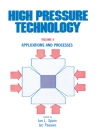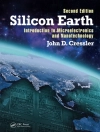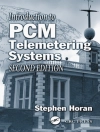Nanosensors refer to a miniature electronic sensing device that works on a "Nano-scale" region. A nanosensor is a device that can transfer information and data on the behaviour and characteristics of tiny particles to a higher degree of visibility. Nanosensors can be used to distinguish chemical or mechanical data, such as the presence of material species and nanoparticles, or to screen real limitations on the nanoscale, such as temperature. Nanosensors are categorised depending on their design and intended use. Based on their structure, nanosensors are classified into two types: optical nanosensors and electrochemical nanosensors. Depending on the application, the nanosensor can be purchased as a material nanosensor, biosensor, electrometer, or deployable nanosensor. Nanosensors can measure down to the level of a single particle. Nanosensors include an analyte, sensor, transducer, and indicator. Nanosensors work by continuously monitoring electrical changes in sensor materials. The analyte diffuses from the solution for the sensor’s outer layer and responds explicitly and competently, changing the physicochemical properties of the transducer surface, prompting an adjustment of the optical or electronic properties of the transducer’s outer layer, and this change is converted into an electrical sign that is recognized. Like new technology, intelligent healthcare systems are moving toward new approaches and models of healthcare-based nanosensors, smart phones, smart watches, and other gadgets. This book deeply discusses the deployment of nanomaterials and nanosensors to enhance the healthcare system with continuous and real-time monitoring of individuals to avoid huge life risks. Environmental pollution has become a serious global issue affecting public health, the economy, and society. Organic pollutants, heavy metals in the soil, pesticide intake from fruits and vegetables, and the influence of illnesses and their toxins are all considered serious environmental problems. This book focuses on current advancements in DNA-nanosensors for environmental monitoring that make tracking contaminants simpler. DNA nanosensors are used to detect harmful microbiological contaminants, toxins, and medications. Some contemporary DNA-nanosensor environmental monitoring applications are discussed.
L Ashok Kumar
Nanosensors for Healthcare and Environmental Monitoring: Fabrication, Characterization, Simulation, and Applications [PDF ebook]
Nanosensors for Healthcare and Environmental Monitoring: Fabrication, Characterization, Simulation, and Applications [PDF ebook]
Köp den här e-boken och få 1 till GRATIS!
Språk Engelska ● Formatera PDF ● Sidor 353 ● ISBN 9798891133730 ● Utgivare Nova Science Publishers, Inc. ● Publicerad 2023 ● Nedladdningsbara 3 gånger ● Valuta EUR ● ID 9292987 ● Kopieringsskydd Adobe DRM
Kräver en DRM-kapabel e-läsare












